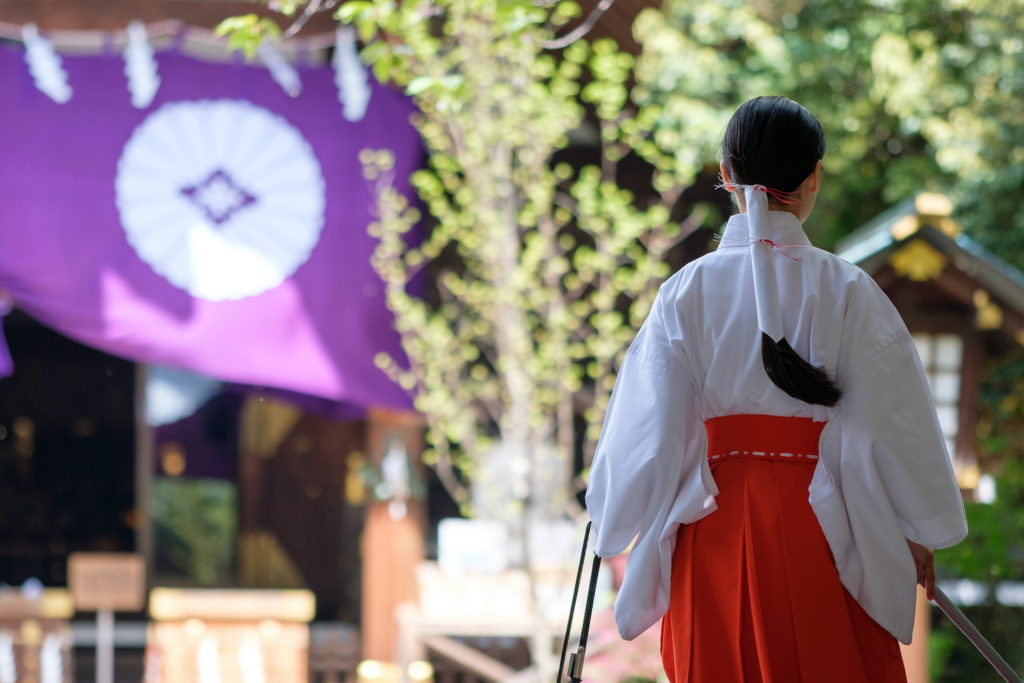
Miko are Japanese female shamans who have long been involved in religious duties at shrines traditionally serving as spiritual mediums, ritual dancers and later as shrine maidens. The role of them have been changed along with the change of the demands of the society, and also influenced by the authority at the time. Let’s take a look at what they once were and what they are in modern times.
Brief History of Miko
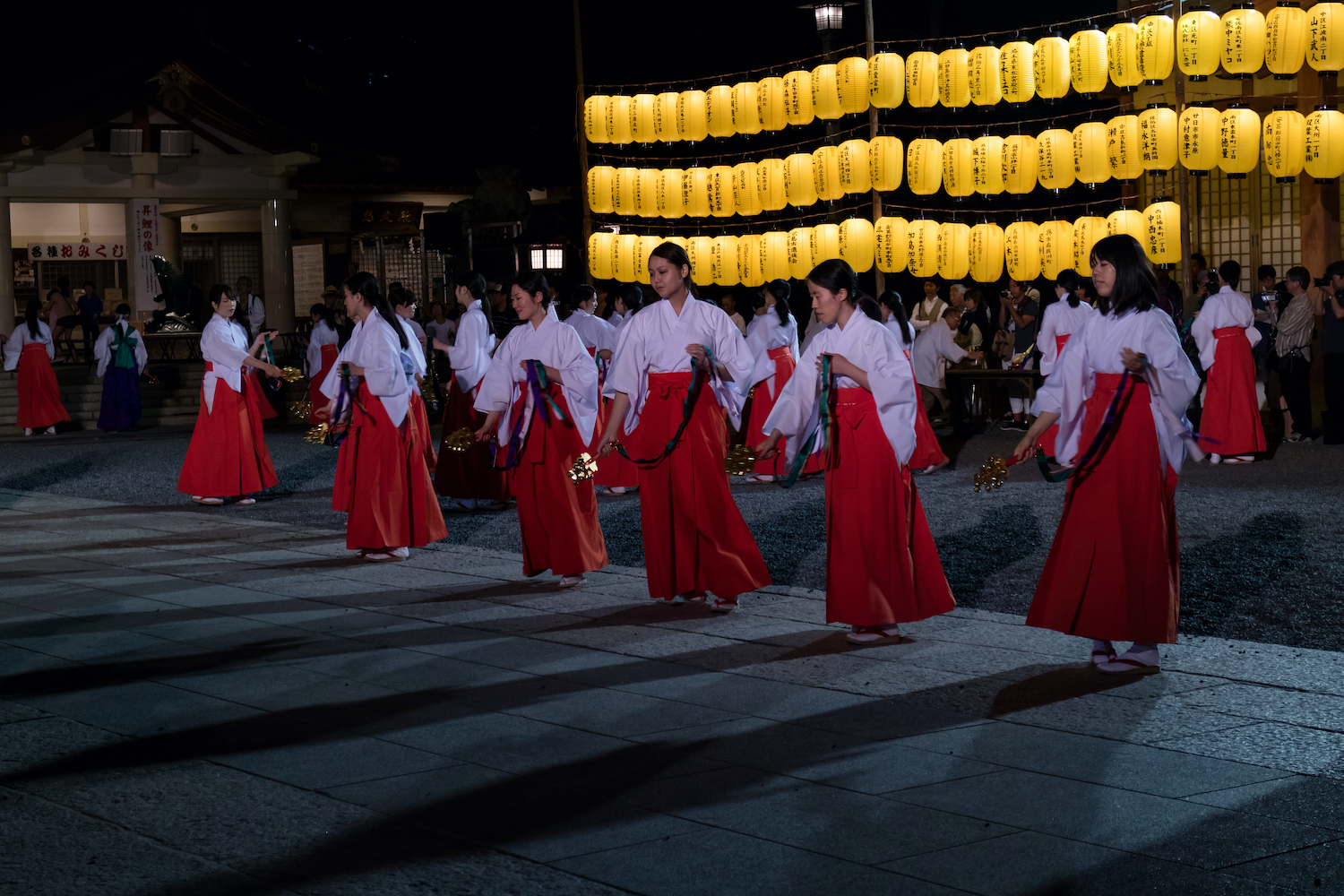
Its traditions date back to the prehistoric Jomon era (14,000 – 300 B.C.E.) when female shamans who would go into “trances and convey the words of the gods” (the kami). It’s considered that they descended from the Female deity Uzume.
Japanese Mythology: Creation of the Universe and Kami
The earliest record of anything resembling the term “Miko” is the Chinese reference to “Himiko”, Japan’s earliest substantiated historical reference, however, it is unknown whether Himiko was one.
The early Miko was an important social figure who was associated with the ruling class. Besides her ritual performances of ecstatic trance, they performed a variety of religious and political functions.
In the Heian period (794-1333), there are four requirements they had to perform such as Ura (fortune-telling), Kami Asobi (kagura: ritual dancing), Yotsura (playing strings of Azusa yumi), Kuchi-yose (spiritual medium to call up the spirits of the deceased).
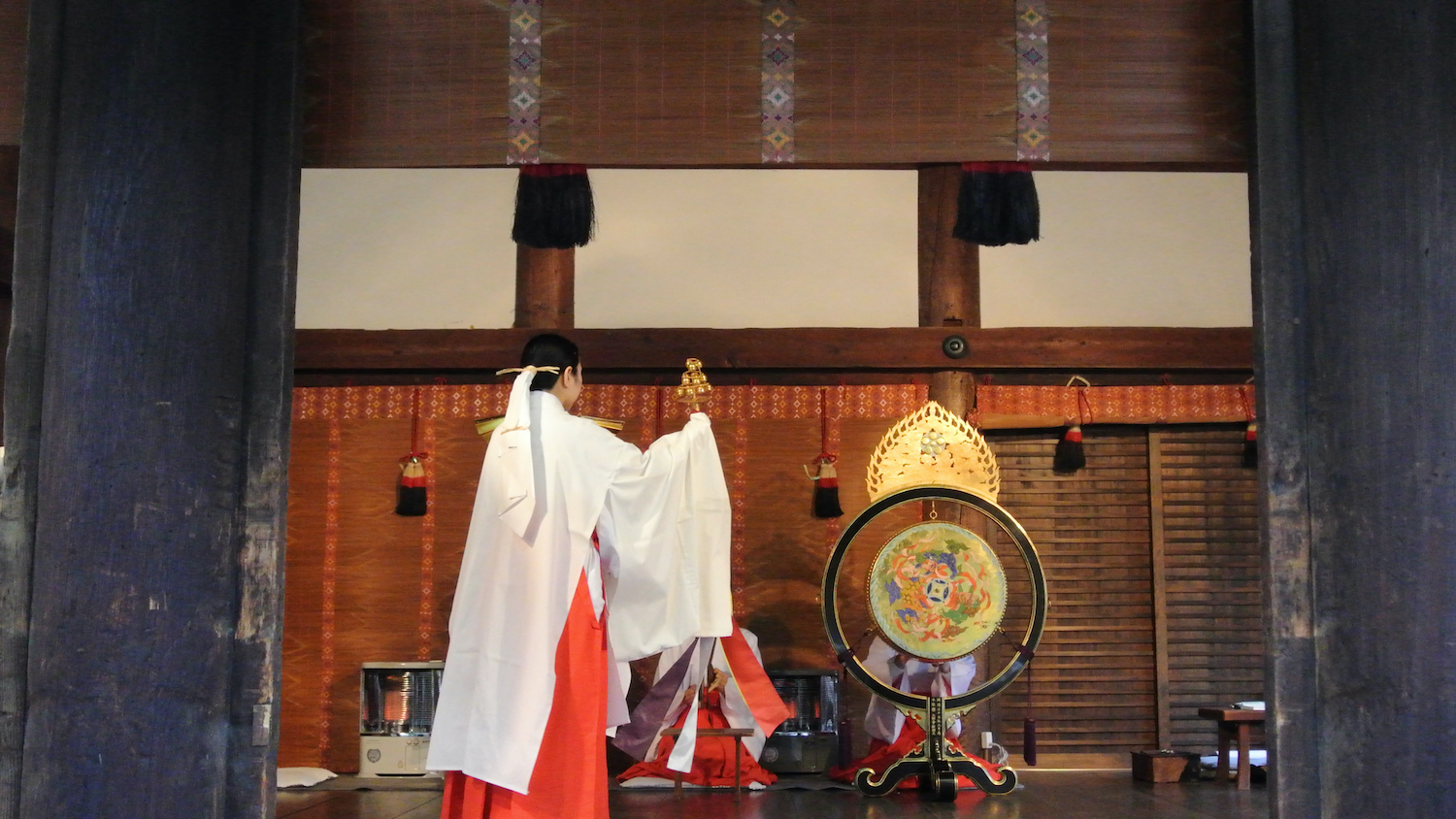
Their dancing for a ritual invoked people of a fairy or a nymph dancing with gods.
It can be classified as there are two forms of Miko, one is to serve the authority and shrines, which are called “Kan-nagi Miko”.
Another one, Aruki Miko (traveling female shamans), who doesn’t belong to a specific shrine, travels and gives service such as cleansing rituals and kagura dancing where festivals and markets are held, and to individuals.
In 1871, the role of them has changed greatly due to the Meiji restoration. The government prohibited them from practicing giving oracles.
Since then, shrines have begun to employ them only as an assistant for shrine functions and they lost its large part of shamanic functions.
Please note that the term “Miko” can be both plural and sigular.
Traditional Training – Miko
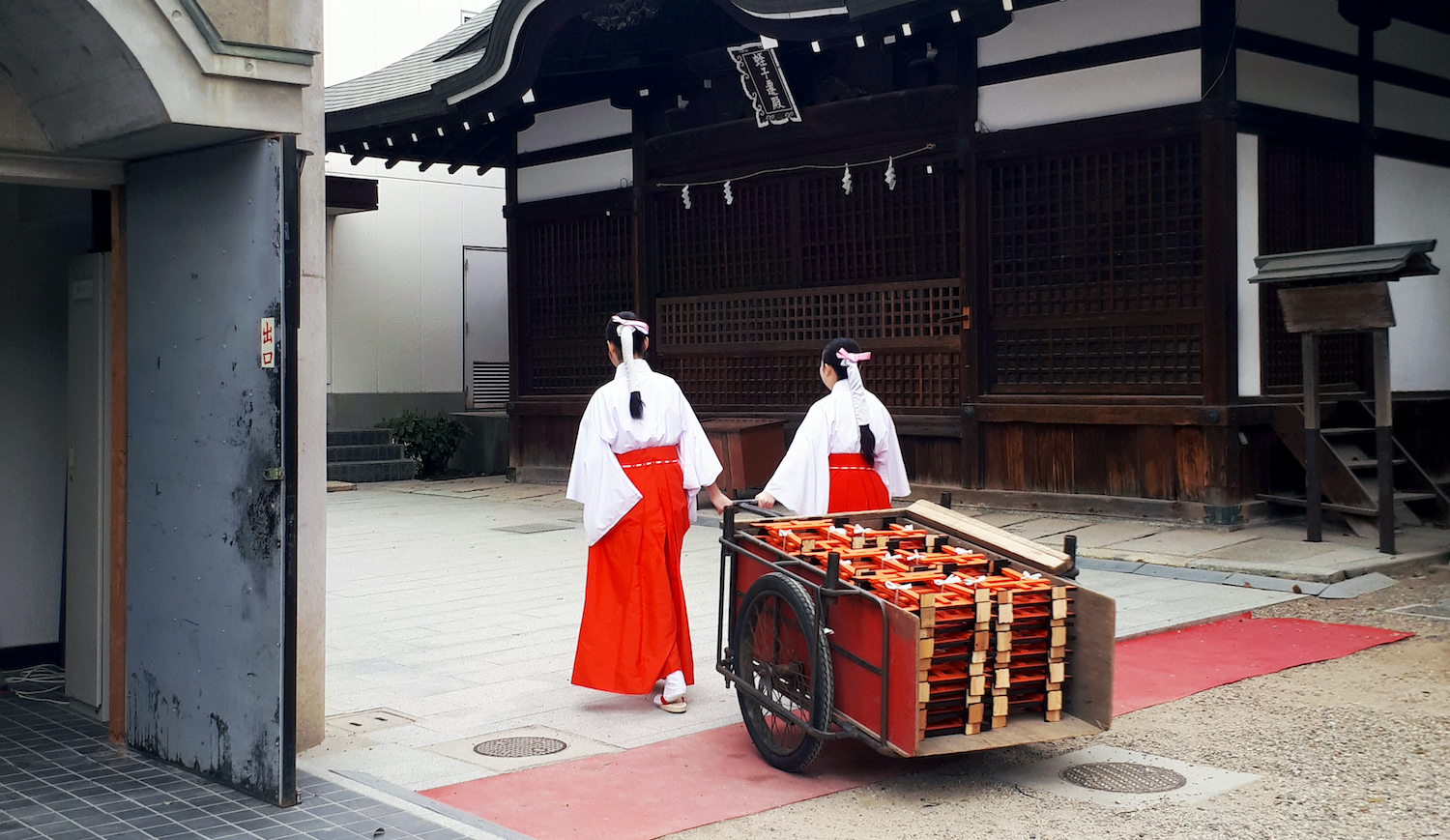
When practicing shamanic service was common for them, there was a certain training to follow.
The girl (still at a young age, mostly after the start of the menstrual cycle) had to undergo very intensive training specific to the Kuchiyose Miko (call up the deceased).
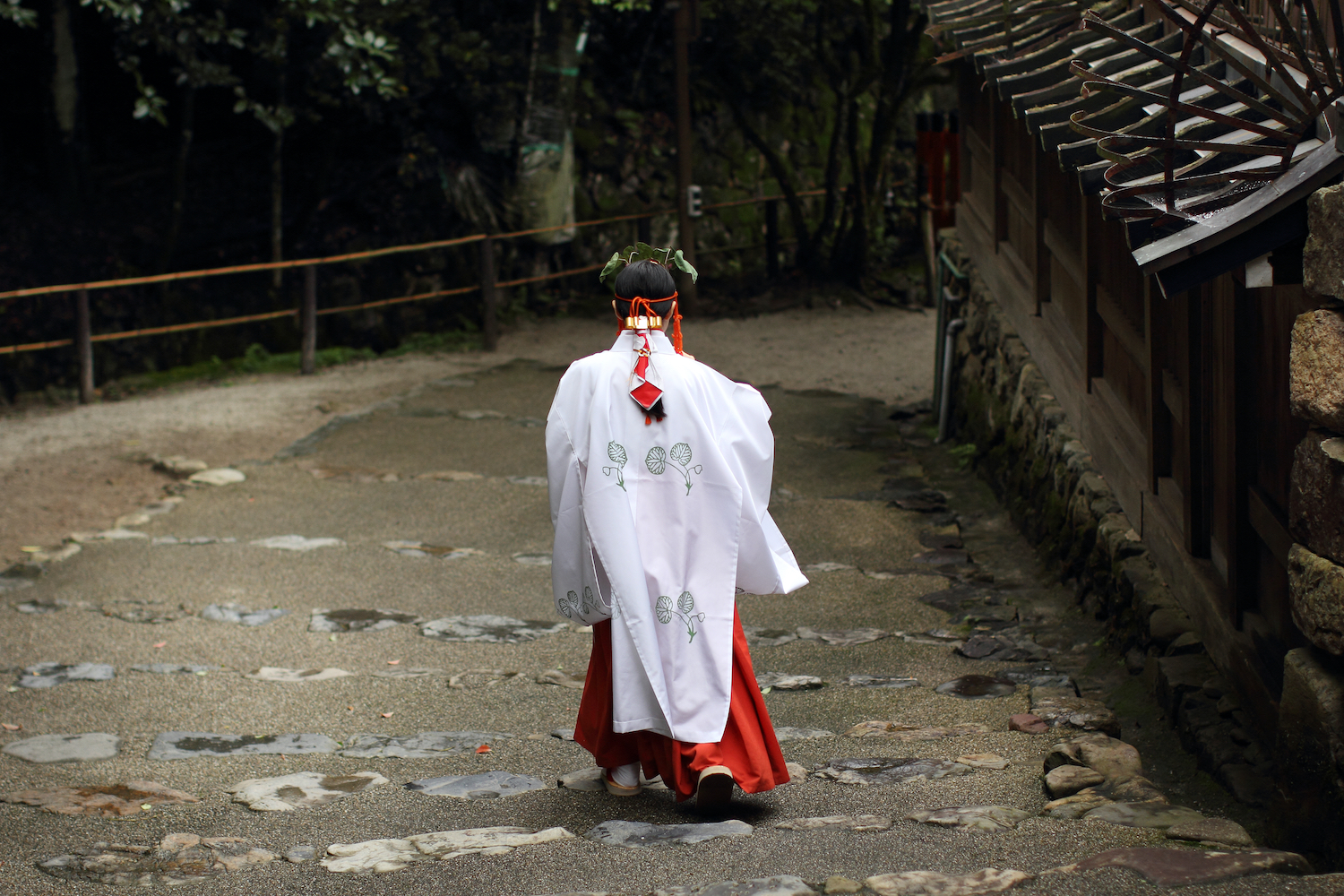
An acknowledged elder shaman, who could be a family member (like an aunt) of a member of the tribe, would teach the girl in training the techniques required to be in control of her trance state.
This would be done by rituals, including washings with cold water, regular purifying, abstinence and the observation of the common taboos like death, illness, and blood.
She would also study how to communicate with Kami and spirits of the deceased, as a medium, by being possessed by those spirits.
This was achieved by chanting and dancing, thus, therefore the girl was taught melodies and intonations that were used in songs, prayers and magical formulas, supported by drum and rattles.
Kagura, Miko Mai (Dance)
Miko Mai is one of the varieties of Kagura dance. The term “Kagura” comes from the spot where the kami – deities exist, turned into the spot Geki (male shaman) and they summon and repose spirits.
They also cleanse uncleanness and impurity of the people, the dance while being possessed by the gods began to be called “Kagura”.
The traditional attire of a Miko would be a pair of red hakama (long, divided trousers) or a long, red, slightly pleated skirt tied with a bow, a white haori (kimono jacket), and some white or red hair ribbons.
When Miko performs Kagura dance, often times they put on other robes on a usual attire and sometimes put on a mask as well.
In Shintoism, the color white symbolizes purity.
Shinto Beliefs: 5 Core Values of Japanese Indigenous Religion
Miko in Modern Day
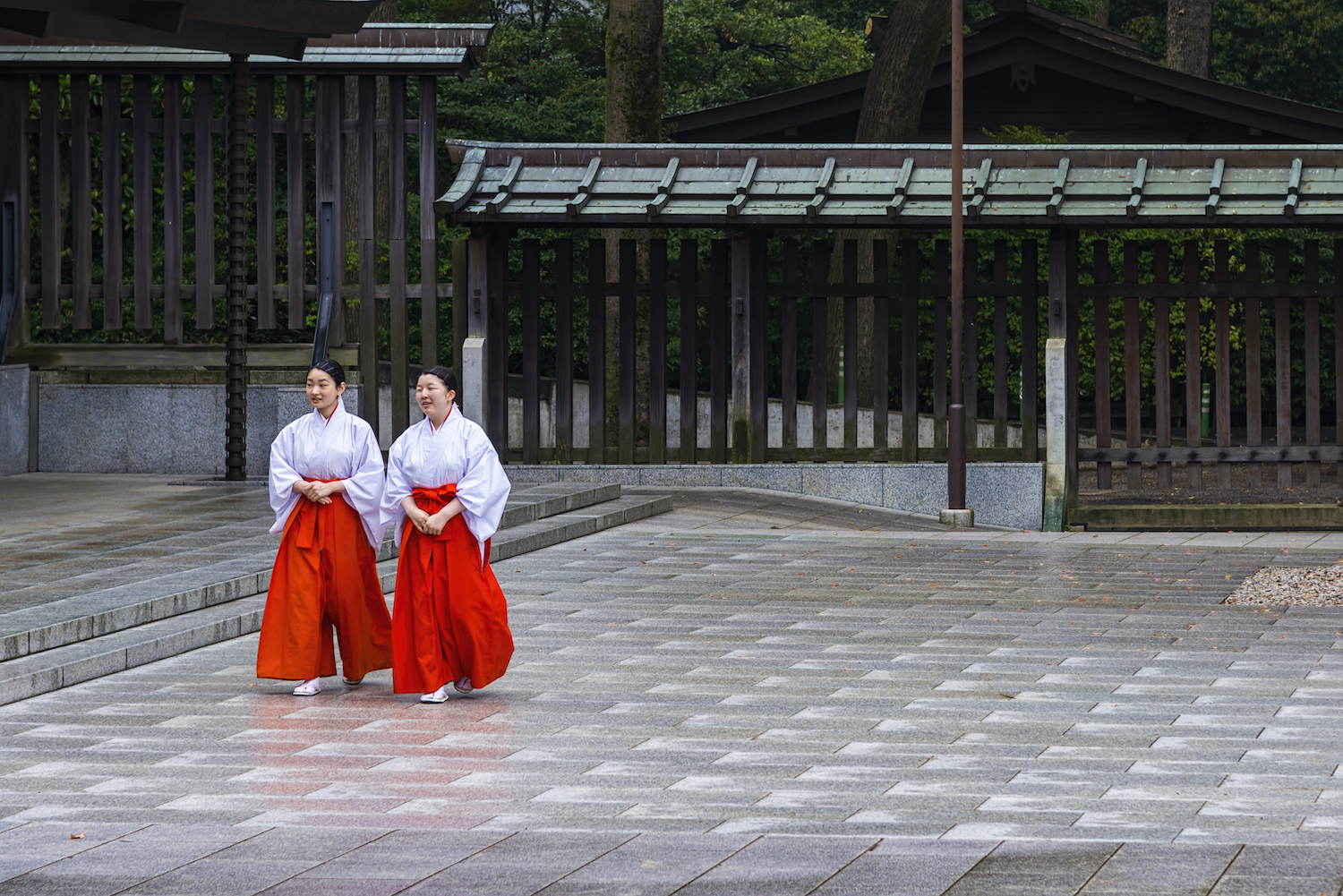
Nowadays they are seen mostly at Shinto shrines, where they assist in shrine rituals and prayers, perform ceremonial dances, and do clerical work such as selling amulets at a shrine shop.
Shinto Shrine: History, Architecture, and Shrine Crest
The term “Miko” remains, but the roles they play has changed to the request of the modern time.
In general, there are no special qualifications or certifications required in modern times to become a Miko.
Most of them today are high school girls or university students who works part-time at a shrine temporarily for a cultural experience and a modest wage.
Full-time shrine maiden is not very common since most leave the job at their late twenty, very few remain as Miko afterward.
We still feel a sense of divine grace from them today, especially when they dance Kagura, even though they don’t possess shamanic elements as they used to have.
Although they change its roles in the course of the history, the tradition they bring to the society wouldn’t change, which is to support people now through with the shrine functions.

 Machi is 14 years old and has spent her whole life in the Touhoku Mountains as a Miko. Raised alongside a talking bear, Natsu, she knows nothing of modern life. But, she’s enthralled with its mysteries and determined to figure them out.
Machi is 14 years old and has spent her whole life in the Touhoku Mountains as a Miko. Raised alongside a talking bear, Natsu, she knows nothing of modern life. But, she’s enthralled with its mysteries and determined to figure them out.References
Shamanism in Japan (Raven’s Shire)


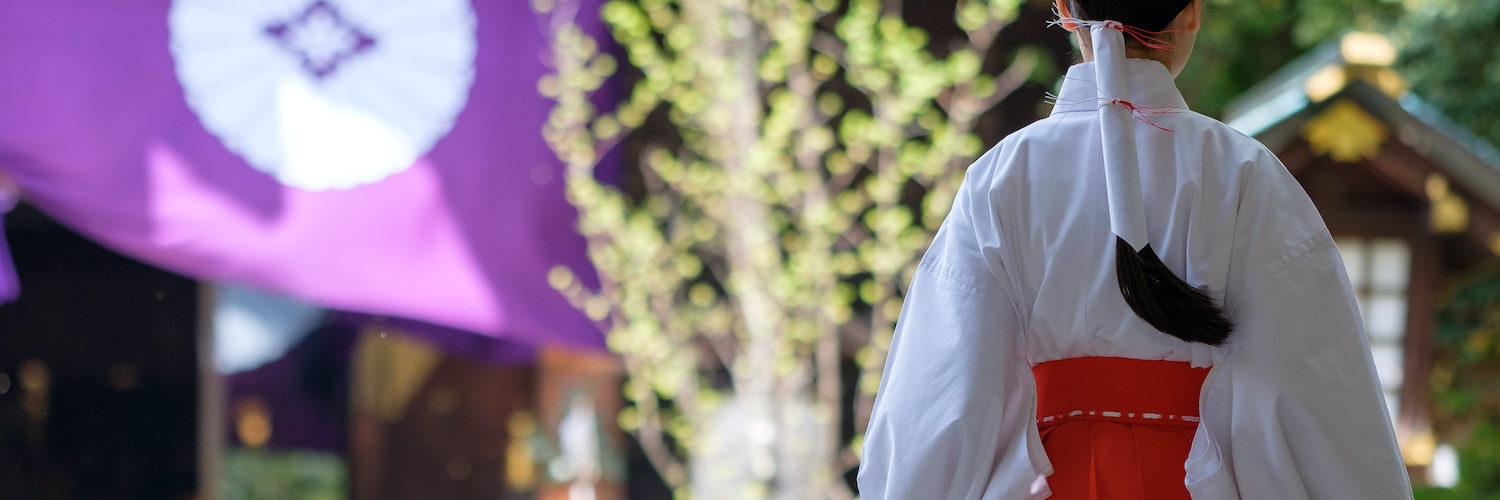
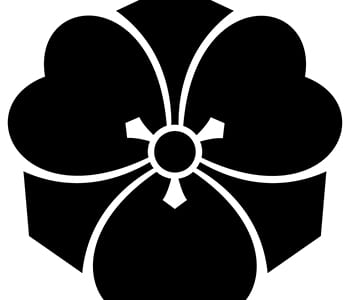
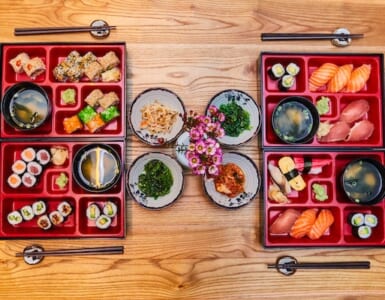
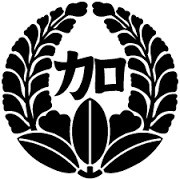


Add comment